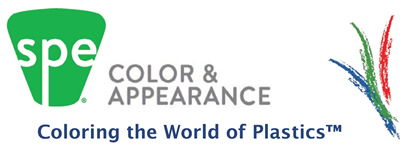Effects of Gamma Irradiation on Colorants in PET and Co-polyester
[one_half]
Paul Glas and Mark Treitman
Millennium & Co
Speaker: Paul Glas
Starting in 1982 work at Spectrum Colors, Inc. running a 50lb capacity Banbury mixer, Paul has been involved in the manufacture of colorants for plastics for his entire 35 year career. In 1983 Paul progressed to the laboratory at Spectrum Colors as an apprentice color matcher and studied business administration in Kalamazoo MI. In 1991 Paul moved to Southern CA to work as a Laboratory Manager for MKS Color, Hoffman Plastics Compounds and Accel Color. In 2006 Paul moved back to the Midwest to work in Technical sales for Keystone Aniline Co. Currently Paul is employed by Milliken & Co. Plastics and Additives division as Technical Service Representative for Plastics Colorants.
[/one_half] [one_half_last]
[/one_half_last]
Abstract
Gamma Irradiation is used extensively in the sterilization of medical equipment and increasingly for the sterilization of retail foodstuffs. Inexpensive and suitable for mass production, Gamma sterilization methods have long been accepted in medical applications and increasingly becoming accepted in commercial food packaging. PET and Tritan™ co-polyester are used extensively in the food and medical packaging industries and the effects of gamma irradiation on these resins’ physical properties are well understood. The present study explores the effects of a typical single dose of gamma irradiation on commonly used colorants in these two polymers, a subject not well understood. Samples of various colorants combined with PET and Tritan™ co-polyester are injection molded into chip form and exposed to 50 kGy of Gamma radiation via Cobalt 60, a typical strong single exposure used for sterilization. Exposed samples are measured versus a control, first after initial exposure and after two weeks due to the known properties of the resins’ post exposure. Results of recorded color shift are explored as well as the mechanics of the physical changes including cross linking and scission of molecular structures. Results of the research will aid in the correct selection of colorants used in PET and Tritan™ co-polyester to be used in applications intended for sterilization by gamma irradiation.

